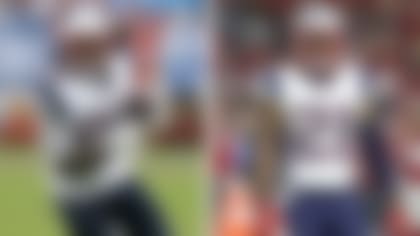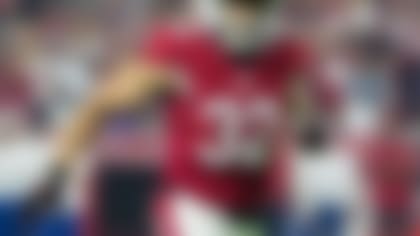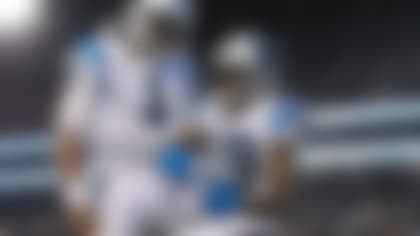The 1985 Chicago Bears have been the standard for defensive domination in the NFL for almost three decades, but watching Lovie Smith's troops terrorize the league in the first half of the 2012 campaign, there might be a challenger to the throne.
The Bears rank second in scoring defense (15 points per game), sixth in total defense (318.9 yards per game) and sixth against the run (88 yards per game). Most importantly, they rank first in takeaways (28) and have scored seven defensive touchdowns in eight games.
While those initial averages fall short of the supremacy of the '85 bunch, this ball-hawking defense's capacity to score from anywhere on the field is an absolute game changer. Defensive coordinator Rod Marinelli is regarded as one of the best teachers and motivators in the NFL. The veteran coach has his veteran defense firing on all cylinders.
So, what exactly makes this defense so effective, schematically speaking?
I took a few days to dig into the All-22 Coaches Film and extensively study the Bears' 2012 unit. Based on my tape observations, there are four basic keys to Chicago's success:
1) Stop the run
Yes, this seems simple. But it's easier said than done. Chicago does it well. The Bears enter each contest with the intention of forcing their opponent into a one-dimensional game plan. They extensively incorporate eight-man boxes on early downs to clog up holes at the point of attack, relying on the speed and anticipation of their talented linebackers to hold opponents to minimal gains on the ground.
When the scheme is executed properly, the Bears rarely surrender big gains and consistently hold opponents to fewer than 100 yards on the ground. With the threat of the run sufficiently snuffed out, the Bears are able to unleash a ferocious pass rush in favorable situations, leading to negative plays and turnovers. But that doesn't necessarily mean all-out blitzes all the time. Far from it.
2) Win with a four-man pass rush
One of the things that really stood out to me during my film study of the Bears was their ability to consistently generate pressure on the passer with four-man rushes. Chicago depends on a deep defensive-line rotation -- featuring Julius Peppers, Henry Melton, Israel Idonije, Shea McClellin and Corey Wootton, among others -- to collapse the pocket through various stunts, games and conventional rush tactics. By solely relying on the front four to get after the passer, the Bears are able to drop seven defenders into coverage, creating smaller passing windows for quarterbacks.
At the end of the day, this reduces big plays against Chicago and forces opponents to drive the length of the field by stringing together short completions. With the odds stacked against an offense consistently driving 80 yards on 10-plus plays, the Bears win with this conservative approach.
3) Keep the ball in front
I learned early in my playing career that the quickest way to lose on defense is to allow big plays in the passing game. In fact, Willie Shaw, my former defensive coordinator with the Oakland Raiders, repeatedly told me that all quarterbacks love throwing the deep ball, but most lack the patience and discipline to lead an offense down the field by "connecting the dots" (stringing together a series of completions on checkdowns or short throws). Shaw frequently talked about NFL quarterbacks wanting to show off their big arms, and how their egos would eventually lead them to let it fly.
Rapoport: Week 10 game rankings

Texans-Bears promises to be a defensive showdown. Where does it slot in Ian Rapoport's Rap Sheet Rankings? **More ...**
When I watch the Bears play pass defense, it's apparent that taking away the deep ball is a top priority. Safeties Major Wright and Chris Conte will line up as deep as 17 yards off the line of scrimmage on obvious passing downs to make sure receivers aren't able to run past them on vertical routes. Most importantly, they remain disciplined in their drops and rarely vacate the middle of the field by jumping short/intermediate routes.
Cornerbacks Charles Tillman and Tim Jennings also display outstanding awareness, discipline and depth in coverage. Both are keenly aware of opponent tendencies based on formation, wideout alignment and down-and-distance, and they will overplay the vertical routes to take away the deep ball. As a result, Tillman and Jennings are regularly in ideal position when the ball is thrown down the field, allowing them to nab easy interceptions on errant tosses.
In the following screengrab, the Bears are playing a variation of Cover 3 with Tillman aligned in press coverage:
At the snap, Tillman plays bail technique, staying over the top of the receiver to take away the deep throw on the boundary:
Tillman maintains great position on the receiver down the field:
Eventually, Tillman picks off the pass down the sideline and returns it for a Bears touchdown.
The Bears' discipline, awareness and depth in the secondary discourage quarterbacks from taking deep shots, relegating them to a "dink and dunk" philosophy.
4) Make plays on the ball
Harrison: Week 10 predictions
Two of the NFL's best teams face off Sunday night. Who will prevail: Texans or Bears? Elliot Harrison provides his picks. **More ...**
This is where Chicago's defense really makes hay. It is not a coincidence that the Bears have produced the most takeaways in the NFL since Smith's arrival in Chicago in 2004. (The Bears have 294 takeaways in that time span, with the New England Patriots ranking second at 262.) Smith has preached the value of the turnover at every opportunity, and his team certainly has heeded the message by relentlessly attacking the ball on each down. Whenever I observe Bears practice or discuss the overall philosophy of Chicago's ball-hawking ways with those in the know, these principles always come up:
» Keep your eyes on the ball.
» Run to the ball like your hair is on fire.
» Knock out the ball at every opportunity.
» Scoop and score at all times.
While these themes are roundly discussed in every locker room across the NFL, the Bears back up the words with actions, on the practice field and in games.
Since Chicago is primarily a zone-coverage team, Smith routinely has 11 defenders eyeing the ball, resulting in quicker reactions overall. Against the pass, in particular, the Bears are able to gain an additional step or two on throws by reading the eyes of the quarterback, allowing them to get their hands on more balls and produce turnovers off tips and deflections. Just take a look at the video on your right to see how Jennings is able to anticipate the throw and snag one of his league-best six interceptions.
Smith also demands that his players finish at the ball on every down. There is zero tolerance for loafing on this defense. Perennial Pro Bowlers Brian Urlacher and Lance Briggs literally knock each other over while attempting to put hits on receivers, and the dogged pursuit routinely results in interceptions. Watching the play linked right here, I came away impressed with Urlacher's ability to anticipate the throw and Briggs' hustle to the ball, which led to another pick-six for Chicago.
While the Bears should be commended for maintaining vision on the quarterback and hustling to the ball, it's their tenacity that really jumps off the tape. I don't know if there is a more physical defense in the NFL. The Bears constantly produce turnovers through bone-jarring hits. Also, they've mastered ripping the ball away before opponents hit the ground. Tillman, in particular, has developed an uncanny knack for separating players from the ball, as evidenced by his league-leading seven forced fumbles. But it's the team effort that really makes this unit special. Everyone wants in on the action, as evidenced by the following play against the Rams in Week 3.
In the screengrab below, the Bears are playing Cover 2 with Jennings aligned in press technique across from Rams receiver Danny Amendola:
When Amendola breaks inside on the slant, Jennings steps in front of the route to deflect the ball away from the receiver. Notice how three other Bears defenders are relentlessly pursuing the ball:
With everyone running to the action, Wright is able to snatch the deflected ball out of the air:
The result? Six more points for the defense on Wright's 45-yard scamper to paydirt.
The Bears' propensity for delivering turnovers is certainly impressive, but it pales in comparison to their ability to turn these takeaways into scores. Chicago's defense instantly transforms into an exceptional return unit the moment a defender picks off a pass or scoops up a loose ball. The closest defenders turn and run to set up an impenetrable wall down the nearest sideline and the returner immediately takes the ball outside the numbers to follow a wall of blockers to the end zone. While most teams attempt to orchestrate their turnover returns in a similar fashion, few can rival the organization and structure of the Bears' return.
Bottom line: Chicago has become an offensive juggernaut on the defensive side of the ball.
Follow Bucky Brooks on Twitter @BuckyBrooks.












